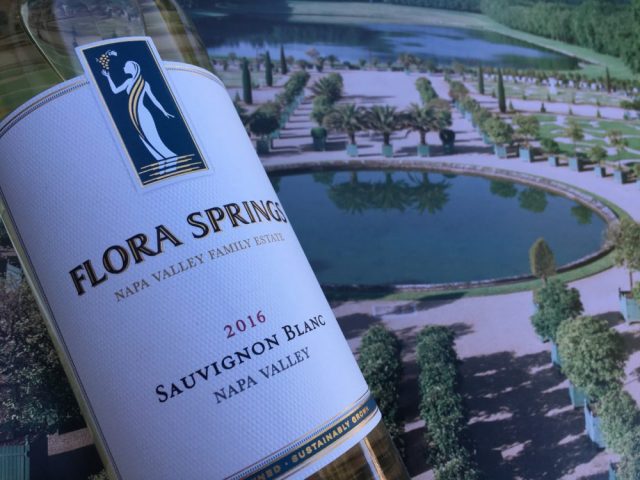It’s all in the family with Pedroncelli. It all started in 1927, when Giovanni and Julia Pedroncelli purchase their hillside Geyserville property with a mere 25 acres planted predominantly to Zinfandel. The winery survived prohibition, watched Dry Creek become an AVA, expanded and replanted their vineyards, opened their official tasting room. It’s been 90 years of wine and vine ups and downs and Pedroncelli has managed to keep it all in the family.
Tag: california wine
Flora Springs 2016 Family Estate Sauvignon Blanc
John Komes, co-owner of Flora Springs, may have a self-proclaimed love affair with Chardonnay, but his son Nate, general manager at the winery, is a fan-boy for Sauvignon Blanc. The Komes family have been farming the white grape for over three decades, utilizing the the two vineyards sourced for this bottle for the past two decades. Apparently there has been some talk about, and temptation to, graft these vines over to Cabernet Sauvignon (Flora Springs is well known for their big bold reds.) But with Nat’s encouragement, the family’s held back. And, personally, I’m glad they have. Well structured Sauvignon Blancs are hard to find — but with the clonal mix along with the combination of different aging techniques, that’s exactly what Flora Springs have produced with this 2016 vintage.

Y. Rousseau 2016 Old Vines Colombard
Y. Rousseau’s Colombard is called “old vines,” but it could also be called “only vines,” as the vineyard sourced for these white grapes is one of the last of just two or three remaining sites planted to Colombard in the Russian River Valley. There was a time in California’s history when Colombard was the number one grape grown, predominantly in the Central Valley, where it was used to produce “easy drinkers” (aka jug wine), as well as add a crisp acidic backbone when blended with other white varietals. Oh how times have changed. Even in the grape’s native Gascony the Colombard vineyards are dwindling, as its prone to powdery rot and mildew. So, suffice it to say, Yannick was pleased to find these old vines growing in his new Northern California wine country home. And, like the passionate professional he is, he pays due respect with his expression of this lesser-known grape variety.
Y.Rousseau 2015 Old Vines Colombard
If tasting wines from Y. Rousseau, a journey into the somewhat obscure (for California) Colombard grape is a must. Yannick, owner and winemaker of Y. Rousseau wines, is a native Gascon — as is the white grape Colombard. So it’s only appropriate that in 1996, while studying for his winemaking degree at Toulouse University and interning at Côtes de Gascogne, the first wine Yannick ever made was Colombard. When Yannick eventually founded Y. Rousseau Wines in 2008, Colombard was his “inaugural wine,” and, according to Yannick, remains one of his most popular.
Y.Rousseau 2014 Pepé Merlot
Born and raised in the South West of France, it’s no wonder Yannick Rousseau, owner and winemaker of Y. Rousseau Wines, was bit by the winemaking bug as early as 5 years old. That’s when he and his grandfather, Pépé shared their first glass of homemade red wine together. According to Yannick, “Pépé hunted his own food, made his own wine, and was an artisan butcher.” With such a role model in his life, Yannick, too, has become a man who celebrates the bounty of the environment around him. The Y.Rousseau 2014 Pepé Merlot from Cavedale Vineyard is a nod to Yannick’s connection to his grandfather, his French country homeland, and his New World wine country.


